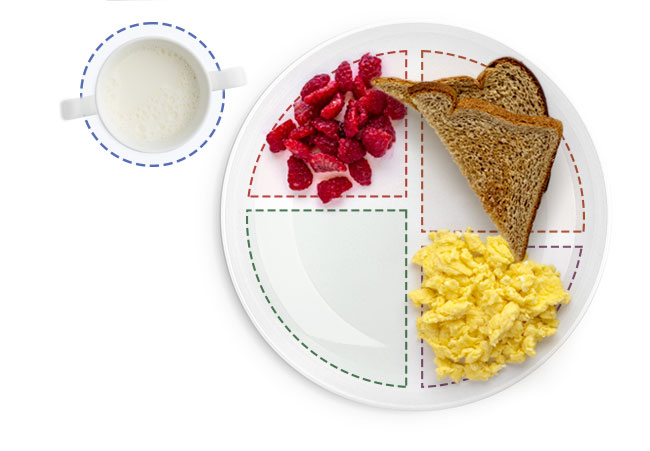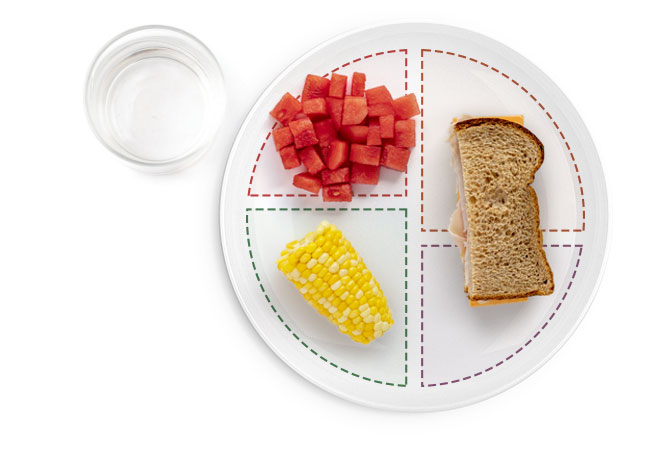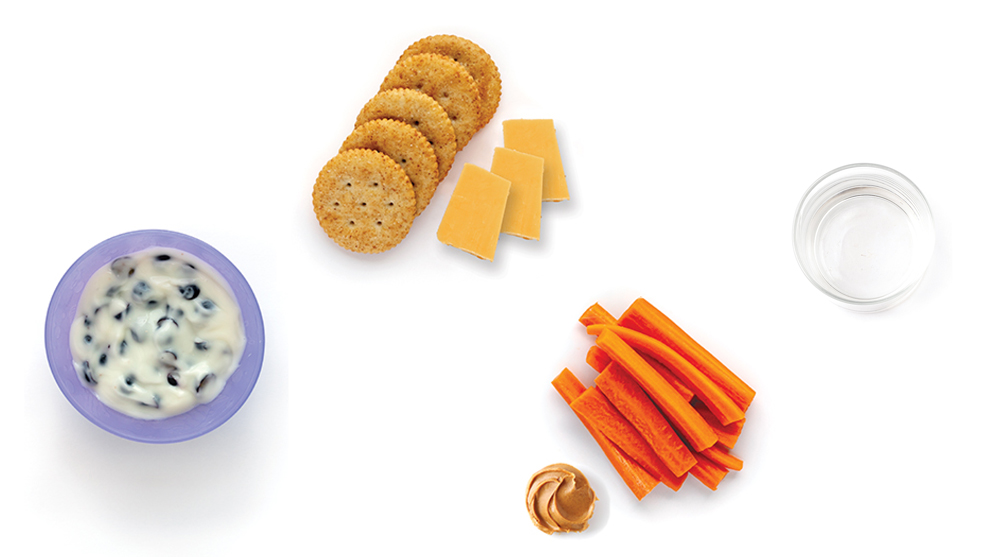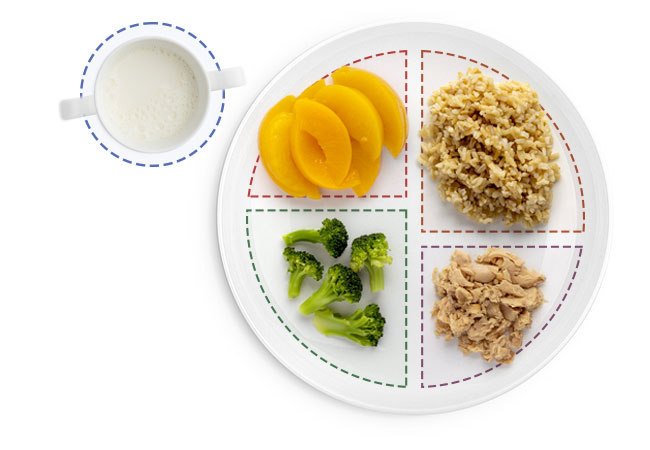I am learning to do more for myself.
I need STRUCTURE AND SUPPORT to be a good eater.
To do my best with eating, I need healthy meal and snack options from you. It’s up to me to do my job with eating.
YOUR JOB IS TO DECIDE:
- What food is offered
- When the food is offered
- Where it will be eaten
MY JOB IS TO DECIDE:
- If I will eat or not
- What I will eat from the food that is offered
- How much I will eat
Don’t worry if I don’t want to eat a meal or snack.
Tell me when you will offer my next meal or snack.
I will probably be hungry by then.


SUPER SNACKS
Snacks help me get what I need to grow, play, and learn. My stomach is small, so I get hungry every 2 or 3 hours. Offer me one snack between breakfast and lunch, one snack between lunch and dinner, and maybe one snack before bedtime.
Here are some examples of what meal and snack portion sizes might look like on my plate.
Breakfast
¼ cup diced raspberries
½ cup low-fat milk

1 slice whole grain toast
1 cooked, scrambled egg
Lunch
1 medium wedge, cut up melon
1 cooked, small ear of corn
½ cup water

1 slice whole grain bread
with 1 ounce lean deli turkey or ham
with 1 slice cheese
Snacks

½ cup chopped blueberries
with ½ cup low-fat yogurt
5 or 6 whole grain crackers with cheese
½ cup sliced carrots
with 1 tablespoon peanut butter
water between meals and snacks
Dinner
½ cup sliced peaches
½ cup cooked broccoli florets
½ cup low-fat milk

½ cup cooked brown rice
1 ounce drained, canned salmon
Daily Suggested Food Group Amounts
FRUITS
3 servings a day
1 serving = ½ cup
(1½ cups total)
Cooked or soft, raw fruit.
Mashed, sliced, or chopped.
Offer a variety: red, yellow, orange, blue, and green.
VEGETABLES
3 servings a day
1 serving = ½ cup
(1½ cups total)
Raw or cooked, mashed, sliced, or chopped vegetables.
Offer a variety: dark green, orange, red, yellow, and purple.
GRAINS
6-8 servings a day
1 serving = ½ ounce
(3-4 ounces total)
Whole grain bread, tortillas, rice, noodles.
Dry or cooked cereal.
PROTEINS
3-4 servings a day
1 serving = 1 ounce
(3-4 ounces total)
Cooked lean meat, poultry, or seafood.
Eggs.
Cooked beans, peas, or tofu.
Peanut butter.
DAIRY
5 servings a day
1 serving = ½ cup
(2½ cups total)
Low-fat milk.
Yogurt.
Cheese.
Look what I can do!
- I can help set the table.
- I can scrub and wipe a table or counter using a cloth or sponge.
- I can break and tear vegetables for a salad.

Keep me safe and healthy.
Make sure foods are cut up small enough so I won’t choke on them.
Take me to the doctor for my check-ups.
Help me brush my teeth 2 times every day with a small, soft toothbrush and a pea-sized amount of fluoride toothpaste. Teach me how to spit out the toothpaste and floss my teeth every day.
We need to wash our hands often. Teach me how to wash my hands with warm water and soap. I need to wash them for 20 seconds, or the time it takes to sing “Row, Row, Row Your Boat.”
I need simple rules. Set limits on when, where, and how often we have screen time. Talk about what I’m learning as we watch together, and keep me safe from what I shouldn’t see. Let’s focus on each other during meals and snacks, not a screen.
